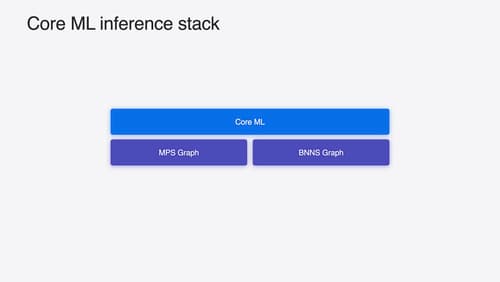multifunction model에 대해서 설명해줘
Asked on 2024-08-12
1 search
The concept of a multifunction model in the context of Apple's Core ML is about enhancing the efficiency and flexibility of deploying machine learning models. Traditionally, a machine learning model is seen as a single function that takes an input and produces an output. However, with multifunction models, you can have multiple functions within a single model, each potentially serving different tasks or purposes.
Key Features of Multifunction Models:
-
Multiple Functions: A multifunction model can contain several functions, each defined for different tasks. This allows a single base model to be shared across multiple adapters, which are small modules trained for specific tasks without altering the base model's weights.
-
Adapters: These are used to extend the functionality of a large pre-trained model efficiently. They allow the model to perform various tasks by using different adapters for different functions.
-
Efficiency: Instead of deploying multiple specialized models, you can merge multiple adapters with a shared base into a single model. This reduces redundancy and improves efficiency.
-
Core ML Tools: You can use Core ML tools to merge models and define separate functions for each adapter. This involves deduplicating shared weights and specifying function names for each task.
-
Use Cases: An example use case is a model that generates images with different styles using a latent diffusion model. Each style can be represented by a different adapter function within the same model.
For more detailed information, you can refer to the sessions from WWDC 2024:
- Deploy machine learning and AI models on-device with Core ML (12:33)
- Bring your machine learning and AI models to Apple silicon (26:24)
These sessions provide insights into how multifunction models are implemented and used within Apple's ecosystem.

Bring your machine learning and AI models to Apple silicon
Learn how to optimize your machine learning and AI models to leverage the power of Apple silicon. Review model conversion workflows to prepare your models for on-device deployment. Understand model compression techniques that are compatible with Apple silicon, and at what stages in your model deployment workflow you can apply them. We’ll also explore the tradeoffs between storage size, latency, power usage and accuracy.

Deploy machine learning and AI models on-device with Core ML
Learn new ways to optimize speed and memory performance when you convert and run machine learning and AI models through Core ML. We’ll cover new options for model representations, performance insights, execution, and model stitching which can be used together to create compelling and private on-device experiences.
